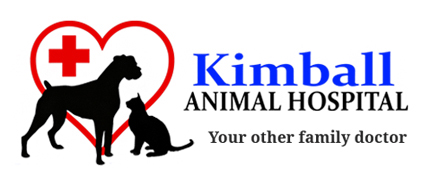Library
-
A cough is an expiratory effort producing a sudden, noisy expulsion of air from the lungs. In cats, coughing is most often a sign of an inflammatory problem, affecting the lower respiratory tract, especially some form of bronchitis, often due to an infection. Heartworm infection, allergies, presence of foreign material within the airway, or irritation from inhaled liquids or gases can all be responsible for coughing and respiratory problems in cats. In order to diagnosis the cause, blood tests, laboratory cultures, endoscopic examination, and radiography may be performed. Treatment depends on the diagnosis and your cat's medical condition.
-
Critical care patients in the hospital are at risk of becoming malnourished, and poor food intake can delay healing and recovery. When hospitalized patients don’t get adequate calories and nutrients, their cellular metabolic activities are disrupted. They can develop problems with medications - either with inadequate drug activity, or creating a relative overdose if drug elimination is slowed. Critically ill cats that are not eating well on their own can directly benefit from the nutrition support provided by a feeding tube.
-
The word cruciate means 'to cross over' or 'form a cross'. The cruciate ligaments are two bands of fibrous tissue located in each knee joint. They connect the femur and tibia (the bones above and below the knee joint). The knee joint of the cat is one of the weakest in its body. When severe twisting of the knee joint occurs; the anterior or cranial cruciate ligament most commonly tears or breaks.
-
Cryosurgery is the application of extreme cold to destroy abnormal or diseased tissue. In animals, the technique is used to treat tumors in locations where conventional surgery would be difficult or impossible. Cryosurgery is sometimes also used for the removal of aberrant or extra eyelashes (distichiasis).
-
Crystalluria refers to the presence of crystals in the urine. These crystals are made up of minerals and other substances that would normally be dissolved in the urine. Crystalluria is diagnosed via urinalysis.
-
Hospitals providing curbside care have restructured their practice to avoid the need for clients to enter the lobby and exam rooms. This measure was designed to promote physical (social) distancing during the COVID-19 pandemic; however, it may be used in other situations. This handout discusses the benefits and best practices of curbside care.
-
Cushing's disease is a condition in which the adrenal glands over-produce certain hormones. It may be caused by a pituitary gland tumor, an adrenal tumor, or prolonged corticosteroid use. Clinical signs include poor haircoat, pot-bellied appearance, increased drinking, and increased urination. Medical and surgical treatment options are discussed. Prognosis varies but is improved with intervention.
-
Lymphoma is a type of cancer that is common in cats. When it occurs in the skin, it is called cutaneous lymphoma, but this form is quite rare. Feline cutaneous lymphoma can present various clinical signs, including itching, alopecia (hair loss), scaly skin, skin redness, loss of skin color, ulcers, nodules, pustules, and plaques.
-
Cuterebra is the scientific name of the North American rabbit or rodent botfly. Cats are accidental hosts of Cuterebra larvae (also called warbles). Botfly larvae encyst (burrow in) the skin. A small “breathing hole” is often visible in the skin over the warble, and this hole can become infected when the larvae matures and leaves. Signs and treatment are discussed.
-
Blue-green algae, also called cyanobacteria, are found in fresh and brackish water of ponds and lakes. These microscopic bacteria can also grow in backyard fountains, garden pots, bird baths, and anywhere water is stagnant. Regardless of where they are found, cyanobacteria can be dangerous.

